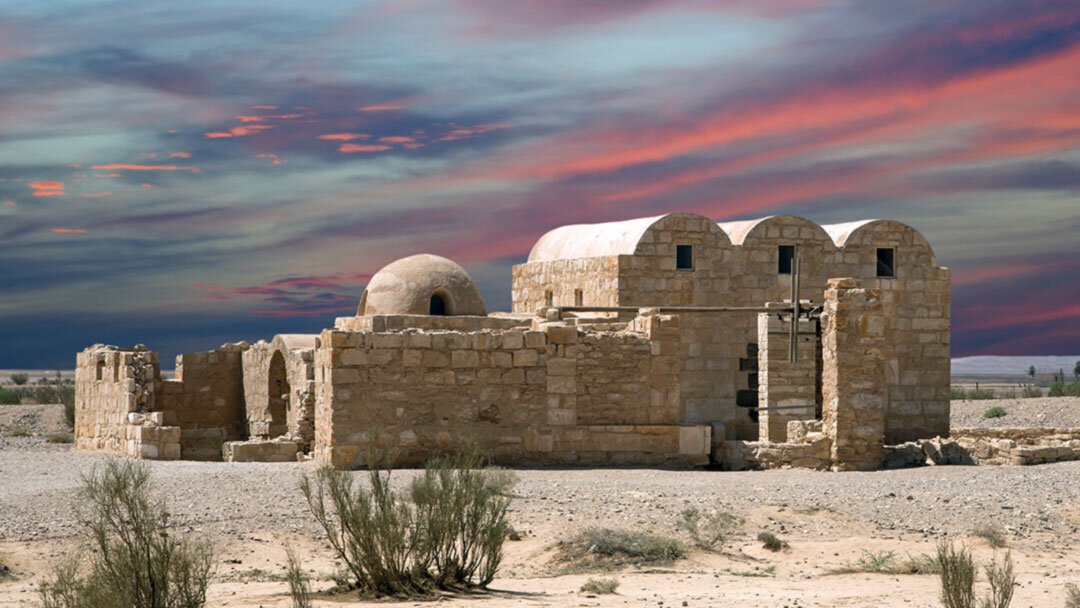Islamic Art Midterm
1/34
There's no tags or description
Looks like no tags are added yet.
Name | Mastery | Learn | Test | Matching | Spaced |
|---|
No study sessions yet.
35 Terms
arabesque
complex, ornate geometrically organized design of intertwined floral, vegetal,
and/or geometric forms
aniconic attitude toward figural religious art =
images are not used as aids to religious
devotion
early Islamic Period
7th-10th c CE
caliph
“successor,” early Islamic leader/ruler of the Islamic state
Dome of the Rock, Jerusalem, 692 CE and Later, on the Haram al-Sharif (Temple Mount), caliph Abd al-Malik wanted the temple re built, built where Adam was buried, Abraham’s sacrifice of his son, place of Muhammad’s night journey, Holy of Holies of the ancient Jewish Temple (Solomon’s Temple)(b/b), byzantine inspired architecture, mosaic, no figures, arabic inscriptions, vegetal, geometric— possible purpose was to make an important Islam monument where the other big religions had theirs, to show it as equally important, supposedly houses holy remains.

House of the Prophet, 624 CE, Medina, mud bricks, built by Muhammad for a community center and prayer hall, repeatedly enlarged/restored since, not known what it originally looked like, very simple, hypostyle, the prophet did not say what form mosques had to take, but many followed this example

Great Mosque of Kufa, 638 CE, al Kufa, brick hypostyle, caliph ‘Umar
qibla
the direction of prayer (towards Mecca)
qibla wall
the wall that faces Mecca
hypostyle
flat roofed and supported by columns, the earliest style of mosque
t-plan hypostyle
flat-roofed structure supported by columns with wider, and usually raised, aisles parallel and perpendicular to the qibla wall, forming a T-shape
mihrab
niche marking direction of prayer, within qibla wall
arcade
a series of arches
minaret
a tower on a mosque, for the call to prayer
muezzin
crier (giver of call to prayer on minaret)
sahn
courtyard
prayer hall
prayer space in a mosque
Great Mosque, Damascus, UMMAYAD: 707-715 CE, Damascus, caliph al-Walid, began as a Roman temple, which byzantines turn to a church, stone and wood, with mihrab, inward looking facade, arcades around big courtyard

gold dinar, showing only inscriptions on either face, minted in Syria (Began with al-Malik), 696-7 CE, inscribed with statements from the Koran, coins were originally derived from Sassanian and Byzantine designs
the Byzantine heritage of early Islamic art/architecture
mosaics (ie, Dome of the Rock), coins, Dome of the Rock supposedly proclaimed that Muslims conquered Byzantines in that area
the Sasanian heritage of early Islamic art/architecture
Arab-Sassanian coin, 7th
Muslims conquer Sassanian areas, like they did Byzantine, Islam borrows Sassanian imagery, depicting Sassanian kings, divine rulership idea was derived from them? architecture, iwan (large barrel vault thingy)
iwan
vaulted chamber walled on three sides and open on the fourth side; usually opens onto a
courtyard
qasr
palace
qusayr
small palace
hammam
bathhouse
Qasr al-Hayr East (al-Sharqi), UMMAYAD: Syria, ca. 730 CE, Caliph Hisham, east and west sides, built of different materials, stone and brick, hypostyle, lintels and buttresses, roman architecture style, caravanserai-inn built around a large courtyard for caravans along trade routes, colonade, vegetal and figural designs-lion and female figures
khan/caravanserai (caravansaray)
inn/hostel inn built around a large court for
accommodating caravans along trade routes; also, a center for trade

Khirbat al-Mafjar, UMMAYAD: 747 Ce, north of Jericho, bath, mosque, courtyard, princely pleasures, mosaic on floor of tree with lion and gazelles, unknown owner of palace

Qusayr ‘Amra, UMMAYAD: Jordan, early 8th c, hunting lodge and bathing establishment, FRESCOS with FIGURES (women), princely pleasures
fresco
painting technique in which paint was applied to plaster that had been applied to wall
surfaces

Mshatta (Qasr al-Mushatta), UMMAYAD: Jordan, c 744 CE, never finished, very large planned size, included the chevron walls, square, likely intended to accommodate a large number of people, unlike other palaces,

al-Mansur’s Baghdad, ABBASIDs: round city, 762 ce, “islamic Rome” took in many influences, cultural center, round design likely from Sasanians, citizens on outer ring, inside has palace, mosque
Ukhaydir palace ABBASIDs: 775-6 CE, Ukhaydir, Iraq, limestone and naked brick, pointed arches, iwan, probably built by governor of Kufa, heavily fortified design, Syrian and Iranian inspo

Great Mosque, Samarra ABBASIDs: Samarra, 848-52, baked brick, mosque with spiraling minaret (Malwiyya minaret) that is separated from structure, covered prayer hall and court, hypostyle, polylobed arches, victory monument?
Jawsaq al-Khaqani Palace, Samarra ABBASIDs: Samarra, 836-9, Bab al-Amma, stairway from Tigris River to here, triple iwan structure, gate, courtyard, palace, FRESCO FIGURAL PAINTED WALLS portraying princely pleasures, stylized